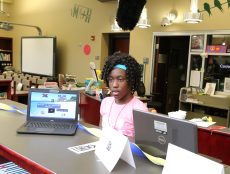Articles
Higher Education
myStudentAid, the DoE’s FAFSA App, Gets Mixed Reviews
By Henry Kronk
November 13, 2018
On Tuesday, Education Secretary Betsy DeVos and Sen. Lamar Alexander (R-Tenn.) paid a visit to Sevierville, Tenn., a small town in the Smoky Mountains (and hometown of Dolly Parton). They’ll spend some time in Sevier County High School to demonstrate the department’s myStudentAid app, which allows students to complete their FAFSA application from their mobile device.
Somewhat similar to tax filing software, myStudentAid coaches learners through the application and uses ‘skip logic,’ allowing applicants to move beyond questions that don’t apply to them.
Development of the app was born out of the reality that, while roughly 70% of high school seniors applied to college in the 2017-2018 school year, only 60% of the class filled out a FAFSA application. That means billions of untapped student resources were left on the table.
Plans to Expand myStudentAid
The app debuted a beta version in August and the full version was available for download as of October 1. As of October 17, the Department of Education announced plans to include five additional services within the app which, besides the FAFSA application, would include capabilities to inform learners of the status of their federal loans, a checklist that describes actions that need to be taken, an accounting of their unused federal loans, the ability to enroll in an FSA rewards program, and portal specific to the institution in which the learner enrolls.
As Clare McCann, deputy director of higher education policy at New America, a non-partisan think tank and former DoE official told CNBC, “The app itself is pretty snazzy. This will be important for a lot of people who don’t have regular access to computers.”
Reviews Remain Mixed
But more than a couple users disagree. Currently on the Google Play and Apple App Store, the myStudentAid app has a rating of 3.5 and 3.3, respectively. Over 85 users have rated it on both marketplaces. And the distribution of votes with each mobile OS follows a similar pattern. While the majority of users give the app a rating of 5 out 5, the second most common rating is 1 out of 5.
User Carie Borkowski penned the most-liked review to date on the Google Play store. She gave the app 1 star, writing, “Wow, worse than I expected– and I didn’t expect a lot. Tried to log on and either got an infinite “please wait” message, or an error message. I thought it was me, so I switched networks and still, nothing. Tried to reset my password and I got an error message, no text to reset password. Can’t even log in. I’ll do it the traditional way, thanks for the effort I guess?”
To be fair, this review was written on October 3, two days after the full app went live. But through November, users have reported inexplicable error messages, difficulty verifying their identity, heavy data use which can crash the program, and more.
On the other hand, plenty of users left overwhelmingly positive reviews. One Android user writes, “Since I’ve tried for a whole week to fill out the online FAFSA, I then contacted customer support. They told me a couple ways to troubleshoot the web browser. None helped due to the glitches. So I decided to download the app. It ran slow, but I had to be patient with it. BAM it’s submitted finally!”
While that’s not a positive review of the system overall, there’s more than enough evidence to believe it’s a step in the right direction.
“Being a financial aid counselor I am excited about the new app,” writes an iOS user. “I have went through the app and it offers a lot of resources through the one app. This makes it easier for the students to complete FAFSA, complete loan process and they can also log in and find out information regarding their loan. Great app and easy to use!”
The myStudentAid appears to have some way to come before the kinks have been worked out. But for now, it’s helping at least some college-going learners fill out their FAFSA application more conveniently.
Featured Image: Rawpixel, Unsplash.









No Comments